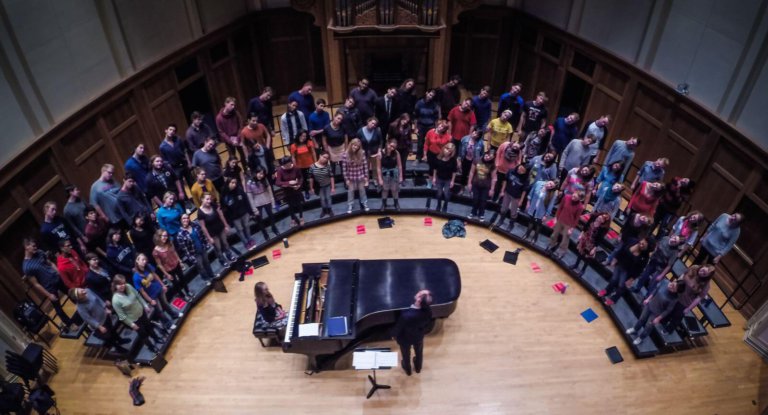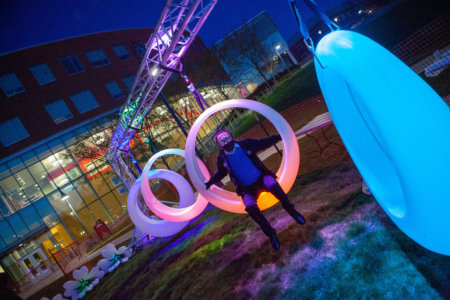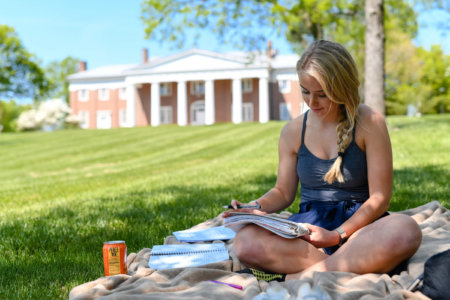
A liberal arts college does more than prepare you for a variety of careers. The communication, analytical and problem-solving skills and knowledge gained from your liberal arts education can also help you stand out in your future workplace.
Attesting to this is an online survey by the Association of American Colleges and Universities. It found that over 90% of employers view these skills as more important than a particular major. Employers also agree that broad knowledge and specific skills are important for recent graduates’ long-term career success at their respective organisations.
There are many benefits to getting a liberal arts education. The broad and diverse nature of the curriculum means students gain an interdisciplinary perspective and cross-cutting skills by studying different subjects in broad fields — an asset in today’s agile world. It also offers students the opportunity to study an area of interest to them for a more enriching education.
Ultimately, a liberal arts college education can equip students with critical workplace skills. If you’re looking for a liberal arts college that offers all the above, in addition to opportunities to forge close connections with the faculty and coursemates, these four institutions will be great choices:
Lawrence University

Lawrence University’s beautiful campus grounds covered in the winter’s snow. Source: Lawrence University
Founded in 1847, Lawrence University — a residential liberal arts college and conservatory of music in Appleton, Wisconsin — has supported and welcomed some 1,500 students from almost all US states and 37 countries to experience an illuminating liberal arts undergraduate education.
Its 8-to-1 student-faculty ratio — one of the lowest in the US — allows students to engage closely with their professors and benefit from individualised learning and more collaborative opportunities. From research projects in the laboratory to one-on-one tutorials with a professor, students can expect a highly collaborative learning experience which is rare in US higher education.
Lawrence’s impactful learning means students thrive long after graduating, working in diverse fields that can be different from their undergraduate majors — a fitting testament to Lawrence’s extraordinary student-centred support.
Lawrence is home to hallmark programmes that serve as a springboard for student success, including: First-Year Studies over two semesters, Engaged Learning, the Chandler Senior Experience and Life After Lawrence. Graduate Lewis Berger attests to the university’s prowess: “I got what I expected from Lawrence and more; not only academics, but also learning how to positively contribute to the community.”
With 65 areas of study for their three bachelor’s degrees, there is something for every student to choose. Lawrence’s programmes in Data Science, Hard Sciences and Economics, for instance, offer built-in internships and research opportunities, in addition to providing students access to excellent graduate and professional school placement. Collectively, these experiences make it among the top liberal arts college in the US.
Haverford College

Stunning fall foliage at Haverford College. Source: Haverford College, Facebook
Located in Philadelphia, Haverford College — founded in 1833 — has over 1,400 students, of which 98% live on its beautiful 216-acre campus. Around 45% of students identify as people of colour, giving Haverford its inclusive and multicultural character.
Haverford students can participate in several unique traditions such as Customs, a unique orientation programme that helps students bond with other students during their first year of college and beyond.
The Haverford Honour Code is another tradition that encompasses both academic and social spheres of life. It is not a set of rules, but a document where students present the ideals and expectations of the current students on campus. With the Honor Code, students can benefit from taking tests without proctors, schedule their own final exams, enjoy the absence of RAs in dorms, and benefit from the lack of an enrollment deposit for admission.
Besides these traditions, Haverford also has a low student-to-faculty ratio of 9:1, allowing students to benefit from more personalised learning. This also means students can actively participate in and work together with professors on high-level research, which forms the core of the classroom experience.
There are 675 courses available at Haverford. They also boast of a unique four-college exchange programme with Bryn Mawr, Swarthmore, and the University of Pennsylvania, allowing Haverford to retain the strengths of the small college experience, while offering students the resources and opportunities usually found at a larger university.
DePauw University

DePauw University is one of most beautiful college campuses in the US, according to Condé Nast Traveler. Source: DePauw University, Facebook
As the top national liberal arts college in Indiana and one of the top 50 liberal arts universities in the US, DePauw University — established in 1837 — attracts over 1,700 students, of which 13% are international.
DePauw has a small student-to-faculty ratio of 8:1, allowing students to work with faculty as their mentors on research solutions to world issues. In fact, according to a survey among young alumni, 97% of students were satisfied or very satisfied with the quality of their faculty.
DePauw offers a host of student support and resources. These include the Honor Scholar and Fellows Program, immersive programmes where top-notch faculty and talented students dive deep into disciplines and work alongside industry leaders for a stimulating and transformative experience. Students can also study abroad and choose from a wide range of off-campus programmes in over 45 countries, including summer and semester-long study abroad.
DePauw’s campus is located on 695 acres of ground. Its location in Greencastle, Indiana means that the campus is a mere 40-minute drive from Indianapolis, a metropolitan area. The nearby 520-acre nature park offers students access to natural scenery, including fields, forests and one of Indiana’s largest waterfalls. In fact, DePauw’s campus is rated one of the 50 most beautiful campuses in the US.
In terms of accommodation, DePauw students can choose from first-year residence halls, Greek houses and upper-class accommodation with on-campus dining choices, allowing them to experience a close community bond.
Bard College

Bard College in Fall. Source: Bard College, Facebook
For 160 years, Bard College has been providing an innovative undergraduate liberal arts programme. Some 1,900 students come to the main Annandale, New York campus. The Bard Network includes campuses in three US states and one in Berlin, Germany.
Undergraduate students at Bard can study in four divisions — Arts; Languages and Literature; Science, Mathematics, and Computing; and Social Studies —and engage in traditional and interdisciplinary academic endeavours.
All first-year students undertake a common curriculum which includes the Language and Thinking Program, First-Year Seminar and Citizen Science courses. The Moderation is a significant feature of Bard’s education programme in which students assess their record and plan a future course of study. There is also a Senior Project, an original, individual, focused project growing out of the student’s cumulative academic experiences.
Bard also boasts of a low student-to-faculty ratio of 9:1. This means students can benefit from personal interactions with Bard’s distinguished faculty who are scholars, advisors and instructors. Bard also has no graduate teaching assistants.
Bard’s campus has over 50 student residences, most of which are co-educational and staffed by resident peer counsellors. Students can also access The Center for Student Life and Advising — which provides academic and personal advice as well as mentorship to students throughout their time at Bard. There is also the beautiful Montgomery Place, a 380-acre estate overlooking the Hudson River.
*Some of the institutions featured in this article are commercial partners of Study International










